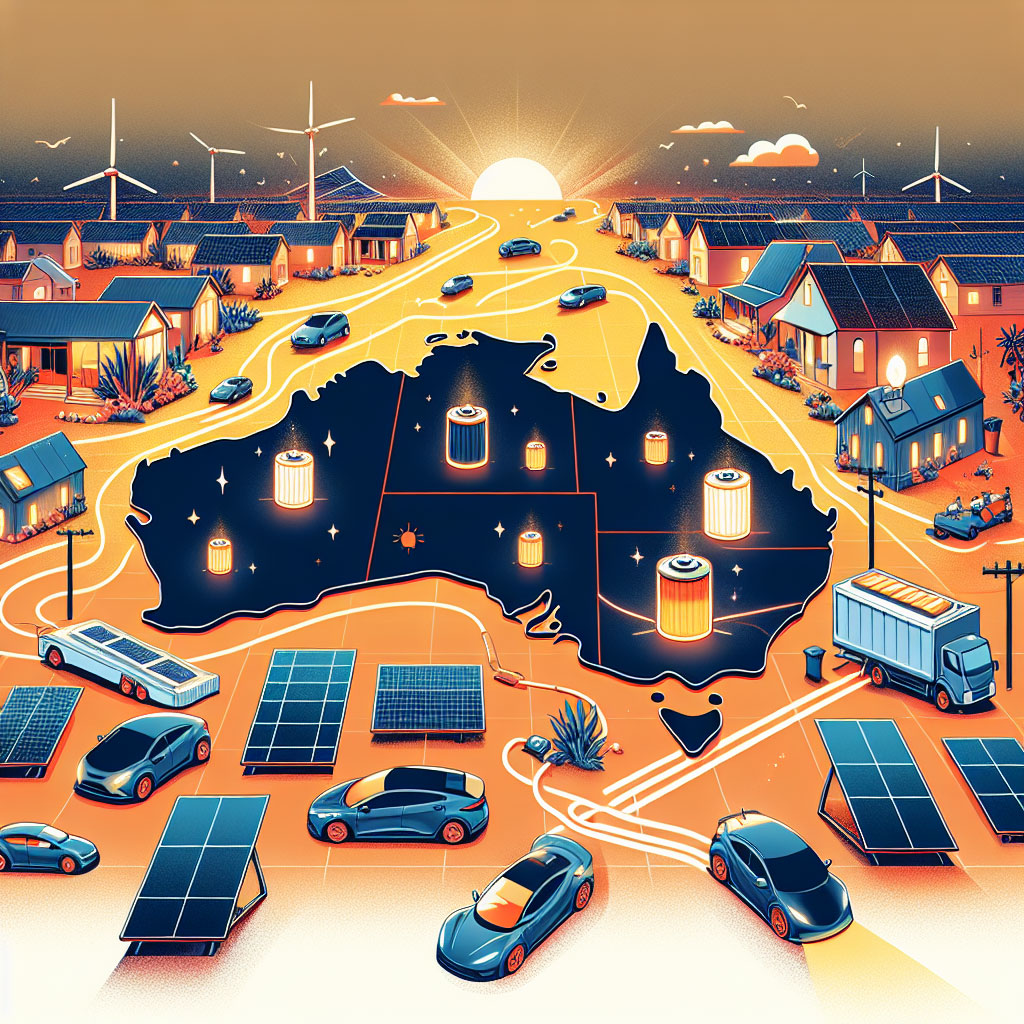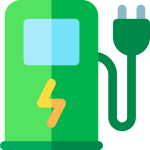
Origin has as announced a landmark pilot with BYD and StarCharge to deliver what it bills as Australia’s first Vehicle‑to‑Grid (V2G) electric‑vehicle subscription. The trial, slated to begin in 2026, pairs a BYD Atto 3 with a StarCharge bi‑directional Halo charger and a smart Origin tariff that will provide free home charging for participating drivers – up to an estimated 24,000 kilometres per year. The initial offer will be limited to 50 customers, with expressions of interest now open.
What the package includes
- A BYD Atto 3 supplied as part of the subscription bundle.
- A StarCharge V2G Halo bi‑directional home charger enabling energy to flow both to and from the vehicle battery.
- Access to an Origin smart tariff and Origin’s Virtual Power Plant (VPP) management system that automates when the car charges and discharges to the grid.
- Free home charging tied to the subscription terms (Origin estimates this could equate to driving up to around 24,000 km per year).
Why this matters for Australian drivers and the grid
Vehicle‑to‑Grid moves the role of EVs beyond transport. Rather than simply drawing power, a V2G‑enabled vehicle becomes a mobile energy asset: plugged in at home, it can supply stored energy back into the electricity network or the household during periods of high demand, and be recharged during low‑cost periods. For drivers, that can translate into reduced energy bills, direct payments or credits for exported energy, and in Origin’s model, the prospect of effectively free home charging while the car participates in VPP services.
Origin says the VPP will automate charging and discharging once the vehicle is connected; the system will prioritise driving needs while allowing the vehicle to provide circuit‑level or grid‑level services when idle. For energy systems, aggregated V2G capacity can deliver frequency control, peak‑shaving and a distributed source of firming for variable renewables – a potential win for integrating more rooftop solar and large‑scale wind and solar into the grid.
Technical and standards context
V2G requires a bi‑directional charger and communications between vehicle, charger and energy manager. Historically, CHAdeMO chargers supported bi‑directional flows, and the EV industry has been evolving the CCS protocol (and ISO 15118 family of standards) to enable bidirectional charging and secure communications such as Plug‑and‑Charge. Vendors such as StarCharge typically implement V2G functionality alongside open communications protocols (for example, OCPP and versions of ISO 15118) so a charger can be controlled by an energy retailer or VPP.
The BYD Atto 3 is a compact SUV that has become a common choice in fleets and private ownership across Australia; its battery capacity and on‑board systems make it a suitable candidate for V2G pilots. The StarCharge Halo in this bundle is a home‑scale bi‑directional charger designed to deliver typical home export and import power levels (often in the 3.6-11 kW range for single‑phase installations in residential settings), allowing meaningful daytime exports back to the home or grid without needing large commercial infrastructure.
What the pilot promises financially – and the assumptions behind the numbers
Origin’s announcement refers to free home charging for eligible kilometres driven and publicly flagged subscription pricing expected to be under $800 per month after tax concessions. It also cites typical savings relative to petrol vehicles: the Electric Vehicle Council has estimated that a driver covering around 12,000 km a year would usually spend roughly $500 in electricity to charge an EV versus approximately $2,500 to fuel a comparable petrol car – figures that depend on vehicle efficiency, petrol prices and electricity tariffs.
To make these numbers tangible:
- If an EV consumes 15 kWh/100 km, driving 12,000 km uses about 1,800 kWh.
- At a residential electricity price of $0.30-$0.45/kWh (national averages vary by state and time‑of‑use), that equates to roughly $540-$810 in annual charging costs.
- If V2G and a smart tariff allow the vehicle to export energy or be charged at lower cost times, those net costs can fall significantly – and in Origin’s promotional modelling the bundled offer can offset home charging costs for the kilometres covered under the subscription.
It’s important to note that these are illustrative calculations: actual savings depend on the vehicle’s energy use, local electricity prices, home rooftop solar generation (if any), the hours the car is available to the VPP and any payments for exported energy.
Practical considerations and limitations
- Availability and eligibility: The initial trial is limited to 50 customers. Participants will need compatible home wiring and may require a dedicated metering or approval from their local network provider to export energy to the grid.
- Battery health and warranties: Manufacturers and pilot operators typically monitor battery state of charge and cycle depth to limit degradation. Most pilots calibrate dispatch so owners retain sufficient range for daily travel. Prospective participants should confirm warranty and long‑term battery implications with the vehicle manufacturer.
- Grid constraints and approvals: Local network export limits, safety and protection requirements, and network operator approvals can affect how much energy a vehicle can export. In some suburbs, export caps may apply until network upgrades are made.
- Tax and fringe benefits: Origin’s month‑to‑month subscription model has been designed to be compatible with salary‑packaging arrangements in some cases, but tax outcomes can vary. Individuals and employers should seek tailored tax and payroll advice.
- Hardware and installation costs: The subscription appears to bundle the charger and vehicle, but customers should confirm any upfront installation costs or additional home electrical work required.
Partnership and market implications
The collaboration between an energy retailer (Origin), an automaker (BYD) and a charger manufacturer (StarCharge) illustrates the multidisciplinary ecosystem required to scale V2G. Origin’s VPP model is an example of how retailers can aggregate distributed batteries – including EVs, home batteries and flexible loads – to provide grid services and potentially return value to consumers.
If pilots like this move from 50‑car trials into broader commercial offerings, they could alter fleet economics and household energy management. Fleets with regular home parking or depot returns could particularly benefit, using vehicle batteries as a dispatchable resource to offset charging costs and provide energy services during peak events.
Outlook for adoption in Australia
As of 2025, V2G trials and demonstrations across Australia and internationally have shown the technical feasibility and potential grid benefits of bi‑directional charging. However, large‑scale adoption will require:
- Clear commercial pathways and attractive returns for vehicle owners.
- Harmonised technical standards and robust communications protocols.
- Network planning that anticipates increased export capacity and inverter coordination.
- Transparent consumer protections around warranties, data privacy and payments.
If Origin’s trial demonstrates reliable value for participants without undue complexity or battery impact, it could accelerate market confidence in V2G subscriptions. Fleet operators, in particular, may find compelling total‑cost‑of‑ownership improvements when V2G revenues and smart charging lower net operating costs.
Conclusion
Origin’s V2G subscription pilot with BYD and StarCharge represents a significant step in Australia’s evolving EV and energy landscape. By combining a production EV, a bi‑directional home charger and integration with a Virtual Power Plant, the trial seeks to unlock new value for drivers while helping stabilise a grid that is increasingly powered by variable renewables. The program’s success will hinge on real‑world performance, consumer protections, network readiness and clear economic incentives for drivers and fleets. For the limited cohort of 50 participants, the trial provides an early look at whether V2G can realistically deliver reliable income streams, meaningful savings and seamless user experience – and whether it can scale beyond pilot stage to become a mainstream part of Australia’s transport‑energy future.
Frequently asked questions
What exactly is Vehicle‑to‑Grid (V2G)?
V2G is a system in which a bi‑directional charger and compatible vehicle allow electricity to flow from the grid into the car and back from the car into the house or grid. Aggregated across many vehicles, V2G can provide services such as frequency control, peak‑demand reduction and energy shifting.
Will using V2G damage my car battery or void the warranty?
Modern pilots and commercial offerings typically manage dispatch to limit deep cycling and preserve battery health. Vehicle manufacturers and operators will often set technical limits and monitoring to minimise degradation. Prospective participants should confirm battery warranty terms with the manufacturer and seek written details from the pilot organiser.
How much could I realistically save with a V2G subscription?
Savings depend on vehicle efficiency, driving patterns, local electricity prices, rooftop solar and how often the vehicle is available to the VPP. Origin’s promotional model projects substantial reductions in home charging costs for covered kilometres, but individuals should review the pilot terms and run their own calculations based on personal usage.
Who is eligible to take part in the Origin trial?
Origin has announced the pilot will be limited to 50 customers. Eligibility will likely depend on home electrical setup, local network rules, and acceptance into the program. Expressions of interest are open; successful applicants will be notified as the trial proceeds.
What standards and technologies enable V2G?
V2G relies on bi‑directional charging hardware and secure communications. Standards such as ISO 15118 (and its evolving updates) and open protocols like OCPP support the technical and information exchange needed for automated, grid‑aware charging and discharging. Local network requirements and installation standards (including safety and metering) also apply.
How is the energy managed and who controls when my car discharges?
In Origin’s offering, the Virtual Power Plant (VPP) operator manages charging and discharging to deliver grid services while prioritising driving needs. Participants typically retain control through opt‑out windows or minimum charge levels so the vehicle remains available for trips.
Can fleets benefit from V2G?
Yes. Fleets with predictable parking patterns, depot charging or overnight charging can use V2G to lower net energy costs and access new revenue streams. Pilots like Origin’s will provide early evidence on how fleet business models can capture value from aggregated vehicle batteries.
About EV Evolution
EV Evolution is the leading online platform dedicated to Australian electric vehicle owners and enthusiasts. We foster a vibrant community, delivering essential EV news and insights, and enhancing user engagement through our innovative, AI-powered chatbot for dynamic discussions. Our mission is to empower Australian electric vehicle owners and enthusiasts by fostering a vibrant, AI-driven online community that connects, informs, and advances the nation’s electric vehicle landscape.




